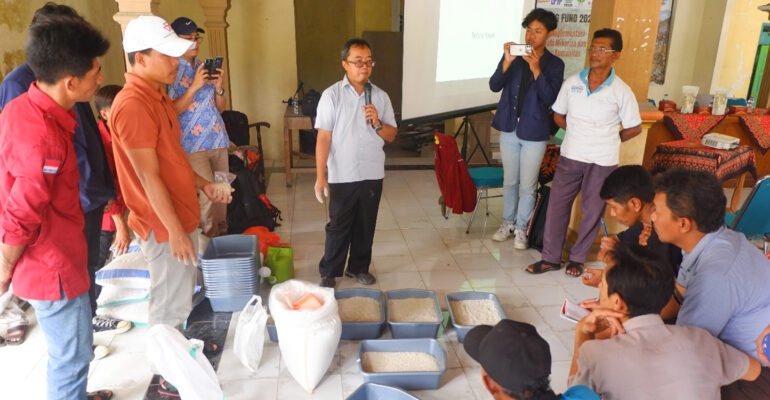Synergy Between IPB University Academics and Village Community for Environmental Conservation on the Slopes of Mount Merapi

A group of academics from IPB University has formed a collaboration with the village community in Pagerjurang Village, Boyolali, Central Java. Through the Kedaireka 2024 Matching Fund program, the lecturers of IPB University aim to implement community-based microcatchment systems to support environmental services and mitigate drought and erosion in the area located on the slopes of Mount Merapi.
Microcatchment is a water conservation technique used in dry or semi-arid land to capture and store rainwater locally. By creating small basins or water-holding structures, this technique helps improve soil moisture, supports plant growth, and reduces erosion. It is often applied in sustainable agriculture and reforestation in regions with low rainfall.
Dr Ahyar Ismail, the program leader, stated that this initiative is designed to support environmental conservation based on scientific innovation. He emphasized that local community involvement is key to the success of the program.
“The Matching Fund program is a tangible form of support from the Ministry of Education, Culture, Research, and Technology (Kemdikbudristek) to foster collaboration and strategic synergy between universities and partner organizations,” said the IPB University lecturer from the Department of Resource and Environmental Economics during the event held at the Pagerjurang Village Office, Boyolali (5/10).
During this session, IPB University lecturers introduced the SPACES program, or Smart Circular Payment for Environmental Services. The program, presented by M. Iqbal Suriyansyah, SKom, MKom, aims to support environmental services through digital technology, enabling the community to receive economic rewards for their conservation efforts.
The event continued with a training session on the production of biofertilizer using arbuscular mycorrhizal fungi (AMF), led by Agustinus Tri Aryanto, SPt, MSi. This training provided participants with practical insights into producing biofertilizer to improve soil quality and support agriculture.
The event was attended by Pagerjurang Village Chief, Nur Amir, along with several neighboring village Chiefs and local residents. In his remarks, Nur Amir expressed his hope that the program would aid in managing the village’s natural resources and be followed by further initiatives. He stressed the importance of synergy between local potential and innovation to ensure environmental sustainability, especially in upstream areas.
“This activity is expected to bring positive impacts to the village community, particularly in terms of environmental conservation on the slopes of Mount Merapi. The collaboration between academics, the community, and the village government is hoped to empower the community to become active participants in environmental preservation efforts,” Dr Ahyar added. (*/Rz) (IAAS/RUM)



